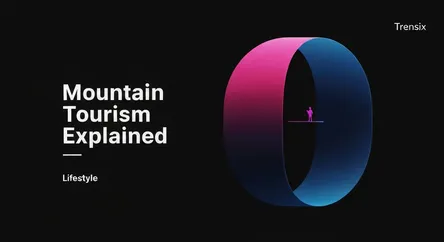Lifestyle
Mountain Tourism Explained

Discover mountain tourism, a travel trend focused on adventure, nature, and wellness. Learn why more travelers are seeking high-altitude getaways.
What is it?
Mountain tourism is a type of travel centered on mountainous regions, attracting visitors for recreation, adventure, and scenic beauty. It encompasses a wide range of activities, from high-adrenaline sports like skiing, rock climbing, and mountaineering to more relaxed pursuits such as hiking, nature photography, and visiting remote alpine villages. It often overlaps with adventure travel and ecotourism, emphasizing physical activity, engagement with nature, and appreciation for unique mountain cultures and ecosystems.
Why is it trending?
There's a growing global desire for authentic, experience-based travel that offers an escape from urban life. Post-pandemic, travelers are increasingly seeking open spaces, fresh air, and activities that promote physical and mental well-being. The visual appeal of majestic mountain landscapes is highly shareable on social media platforms like Instagram, fueling its popularity. Additionally, a rising interest in sustainability and eco-conscious travel draws people to destinations that prioritize conservation and natural environments, which many mountain regions champion.
How does it affect people?
Mountain tourism provides significant economic benefits to often remote communities through jobs in hospitality, guiding, and local crafts. For travelers, it offers profound personal benefits, including improved fitness, stress reduction, and a deeper connection to the natural world. However, it also presents challenges. Overtourism can lead to environmental degradation, strain local infrastructure, and impact fragile ecosystems. Sustainable management is crucial to balance economic growth with the preservation of the cultural and natural heritage that makes these destinations so attractive.